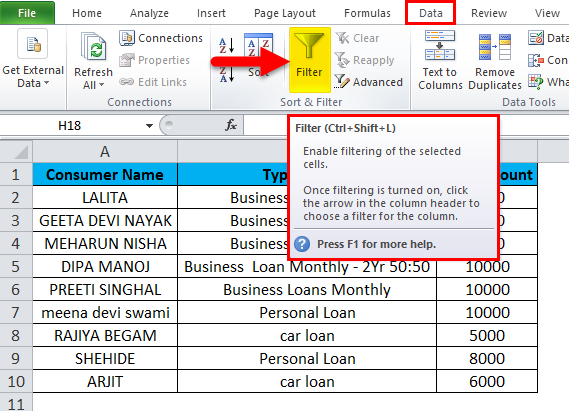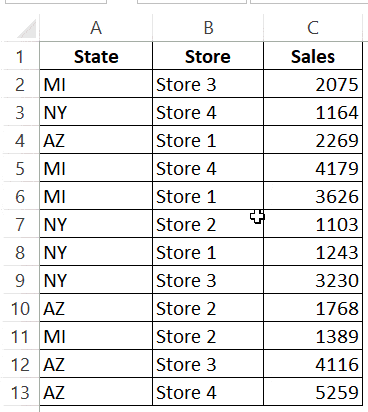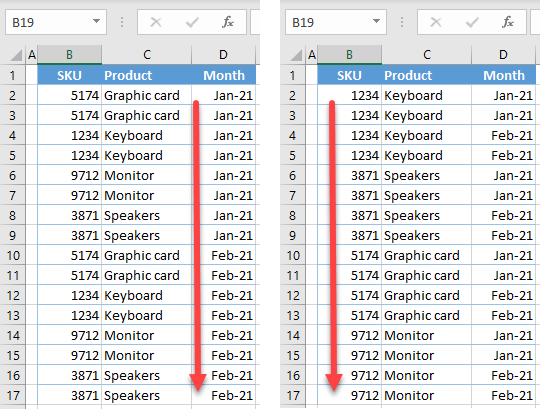

 Sort on: Here, you can mention you want to sort data on the basis of cell values, cell color, font color or conditional formatting. Columns: This will contain all headers of your data. My Data Headers: Check if your dataset has headers. Options: Here, you can select the level orientation of sorting and if values are case sensitive or not. Arrow Buttons: to move any level above or below. (Generally used when sorting is required on the same column but with different values.) Delete Level: to delete any particular level.
Sort on: Here, you can mention you want to sort data on the basis of cell values, cell color, font color or conditional formatting. Columns: This will contain all headers of your data. My Data Headers: Check if your dataset has headers. Options: Here, you can select the level orientation of sorting and if values are case sensitive or not. Arrow Buttons: to move any level above or below. (Generally used when sorting is required on the same column but with different values.) Delete Level: to delete any particular level. 
Add Level: to add different levels to mention sorting criteria depending on the dataset.Options available in sorting dialogue box: Now, as shown in the above image, I have applied sorting criteria, it will give results something like this:.In the above dialogue box, you have to fill your requirements for sorting in cells and add levels one by one.This will open a dialogue box like this:.Simply select the entire dataset and Press (Alt key +A+ SS). This can be only be done by advanced sorting. Why is it required? Suppose you have to find out which employee of every manager has done the maximum order sales.? You can find out answers to queries like this by using multi-level sorting. You want to first sort data by reporting manager, then by employee name and then by order total (highest to lowest).
 In the above illustration, you want to sort data at multiple levels, E.g. While in the above case, sorting is done on the basis of one column, but what if you have data something like in the below image, So to do sorting on the basis of 2 or more columns, you need to take some additional steps. (numerically- lowest to highest or highest to lowest). alphabetically (A to Z or Z to A) or on the basis of Total sales. Now the data in the above image can be sorted based on employee name, i.e. You can download this Sorting Excel Template here – Sorting Excel Template Example#1
In the above illustration, you want to sort data at multiple levels, E.g. While in the above case, sorting is done on the basis of one column, but what if you have data something like in the below image, So to do sorting on the basis of 2 or more columns, you need to take some additional steps. (numerically- lowest to highest or highest to lowest). alphabetically (A to Z or Z to A) or on the basis of Total sales. Now the data in the above image can be sorted based on employee name, i.e. You can download this Sorting Excel Template here – Sorting Excel Template Example#1








 0 kommentar(er)
0 kommentar(er)
